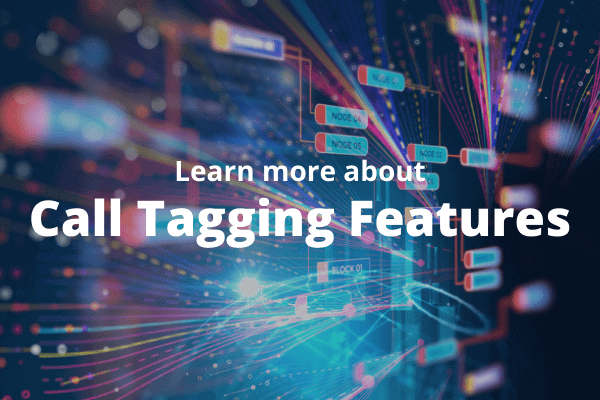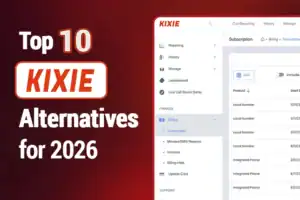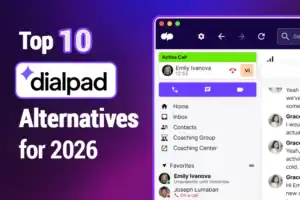Any company from any industry can benefit from the adoption of call tagging systems. However, each firm must use it in order to track the success of its teams in a clear, easy, and operational manner.
On the side of contact centers, having efficient telephony software provides clear benefits to agents. In fact, this solution significantly enhances your performance and business overall due to its numerous functions. All of these capabilities and options, such as call recording, IVR, computer telephony integration, call routing and other allows agents and supervisors to run inbound and outbound campaigns smoothly and easily. In this article, we take look at the telephony feature, call tags.
What exactly is call tagging?
Call tagging is a telephony tool where calls are marked according to their common characteristics, aims, and business importance. This can be done in ongoing calls or on the basis of recorded ones, and most contact centers employ a combination of the two. While the notion is simple, its true value resides in the type of tags you apply.
As a consequence, during a conversation, your agents may “tag” the ongoing call and so qualify it. It is also possible to connect several tags with a single call. This is a way of categorizing calls based on organizational needs and then filtering and analyzing them using these tags to find them quickly. However, call tags will differ based on whether you operate in the inbound or outbound, or mixte campaigns.
Features and capabilities
Every day, your contact center’s agents are expected to make several phone calls. Depending on the nature of the product or service and also the nature of your phone campaigns, the following conclusions may be reached at the end of these calls: The customer wants to be phoned back later, A follow-up is required, Satisfied client, Customer roes not desire to be approached further, Client Needs time to think more, etc.
Every time an agent takes a call, he may personalize it with a tag. Consider this to be the ability to mark call recordings for subsequent reference that varies widely. But there are further functions and options to call tagging.
Perfect blending with other systems
It is critical that your agents classify these calls and be able to find them with a few clicks. Call tags also improve the quality of your discussions. Tagging a call, which will be accessible in the CRM couple with CTI (Computer Telephony Integration) capabilities, allows the next agent in charge of the client to have a direct overview of the situation.
Plus, in the ongoing quest to improve the productivity of your campaigns and enhance your performances. Contact centers now have the option of attaching tags to a call directly from the IVR (Interactive Voice Response). The call will then, progressively take the tags corresponding to the path taken on the voice server based on the direction and pathways specified by the caller. This helps the agents to know the caller’s route through the IVR system and hence anticipate his request more readily.
Increased quality prospects for outbound campaigns
Call tagging lets you see how many interactions come in from possible buyers on a time basis of your choice. Similarly, it enables you to identify frequent objections from customers and how to overcome them. You may then connect phone numbers with telemarketing initiatives in order to identify calls from that campaign and have a better understanding of its efficacy.
All calls made as a result of this ad will be issued a unique call tag, allowing you to identify exactly where the prospect originated from. This way, you’ll get a good overview of the call tags that aren’t converting into purchases and you can analyze them, in order to figure out the reason.
Supervisor features
Call tags are not only beneficial to your contact center employees, but they are also beneficial to their supervisors.
Indeed, supervisors have access to the tags and may thus listen to calls labeled as “to be listened to” or “dissatisfied customer” in their ongoing quest to optimize the administration of your campaign progress and also monitor call frames within your teams. As a consequence, they can better tailor their callback efforts and target consumer demands.
Finally, you may generate statistics reports based on the call tags. This allows you to more quickly adjust your next strategic choices and allocate calls based on internal demands. With more visibility for both contact center agents and supervisors, a call tag is a tool that allows you to profit from efficiency improvements while improving the quality of your client interactions.
Implementing a Call Tag System
Before you begin creating and developing a call tagging system, consider your campaign’s needs and the reasons for establishing such a system.
Consider the many tag categories such as:
- Type of lead: It’s a good idea to indicate the sort of lead as ‘interested,’ ‘not interested’ or ‘purchased another product or service,’ when you contact the prospects, so you can see what type of lead your team contacts. If you realize that many of your leads don’t want to chat with your agents, it may imply that your conduct quality is not good.
- Customer type: It is vital to determine in customer service whether a customer needs support or irritation as quickly as possible. You may identify these talks as urgently or as essential by using call arrangement codes and making them a priority.
- Contact type: You may encounter invalid numbers when contacting leads. If your call disposition tags mark these contacts as ‘invalid,’ the whole team will be alerted, and additional team agent members will be prevented from reaching this contact.
- Reason for calling: As a company, it may be a good practice to label these calls for a variety of reasons so your consumers understand why you are being called. For instance, the reason for the call can be identified by using tags such as ‘Complaint’.
As well as the nature of linked communication channels Web, Emailing, Social media, and Webchat retracing the clients journey. Also the nature of your campaign between Technical support, Customer service request, Collection, etc. And let’s not forget the remarks from your agents ( no answer, not interested, valid purchase, customer request handled, etc…).
Above all, you must select a telephony solution that meets your contact center’s needs. Many solutions now focus their strategy on cooperation and increasing the efficiency of the businesses that utilize them.
Finally, training all your agents is a critical step in adopting a harmonious call tagging system. To guarantee a proper structure of your calls and better cooperation between all of your team members, your tags must be utilized in a consistent and clear manner. As a result, your tag system will be logical and easy to use for all your teams.
The NobelBiz Voice Carrier Solution: Purposely built for contact centers
Nobel Biz Voice Carrier provides one of the most versatile smart telephony solutions to enhance contact rate and productivity, reduce the impact of tagging, call blocking and assure full compliance of all contact centers. Plus, we provide you with the most rapid and proactive customer service in the contact center market, with a first call resolution rate of more than 90%.
Our voice carrier productivity tools include:
- Smart routing (SMRT®): Smart routing calls based on rationing, scheduling, and priority, or overflows to PSTN numbers or SIP destinations.
- Auto-attendant (SMRT®): To develop IVR functionality, customized scripts are created using a simple drag and drop interface.
- Number Provisioning (SMRT®): Access toll-free and local numbers on demand. Reprogram existing numbers from other carriers.
- Compliance Filters (Shield®): Use time zone, frequency, and other filters in order to define the rules of compliance to prohibit operator calling.
- Local Broadcast Number (LocalTouch®): Local Broadcast numbers are compliant, pick-up rates are increased and callback options are enabled.

Abdelmounim Benharouga has always had a strong passion for writing and digital marketing. He started as a Digital Content Writer part of marketing department then moved to being Customer Success Manager for the African Region within the Nobelbiz team.






